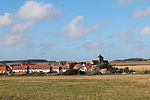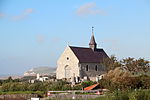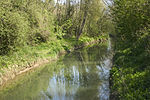Todt Battery

The Todt Battery, also known as Batterie Todt, was a battery of coastal artillery built by Nazi Germany during World War II, located in the hamlet of Haringzelles, Audinghen, near Cape Gris-Nez, Pas de Calais, France. The battery consisted of four Krupp 380-millimetre (15 in) guns with a range up to 55.7 kilometres (34.6 mi), capable of reaching the British coast, each protected by a bunker of reinforced concrete. Originally to be called Siegfried Battery, it was renamed in honor of the German engineer Fritz Todt, creator of the Todt Organisation. It was later integrated into the Atlantic Wall. The 3rd Canadian Infantry Division attacked the Cape Gris-Nez batteries on 29 September 1944, and the positions were secured by the afternoon of the same day. The Todt battery fired for the last time on 29 September 1944 and was taken hours later by the North Nova Scotia Highlanders that landed in Normandy, as part of the 9th Infantry Brigade, 3rd Canadian Infantry Division, after an intense aerial bombardment, as part of Operation Undergo.
Excerpt from the Wikipedia article Todt Battery (License: CC BY-SA 3.0, Authors, Images).Todt Battery
D 940, Boulogne-sur-Mer
Geographical coordinates (GPS) Address Phone number Website Nearby Places Show on map
Geographical coordinates (GPS)
| Latitude | Longitude |
|---|---|
| N 50.8443 ° | E 1.5999 ° |
Address
Musee Batterie Todt (Turm I)
D 940
62179 Boulogne-sur-Mer
Hauts-de-France, France
Open on Google Maps











